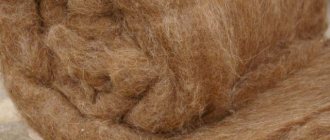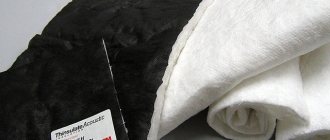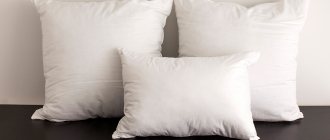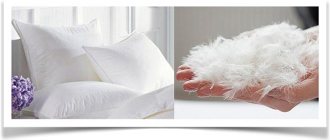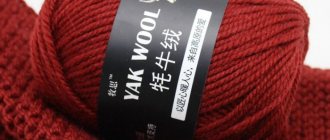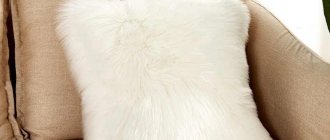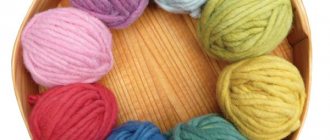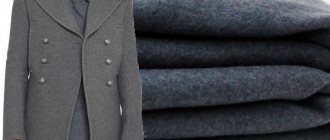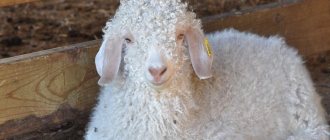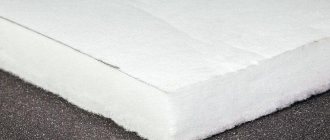Positive and negative qualities
Advantages of a camel wool blanket:
- Lightness due to the “empty” texture of the fibers. They weigh significantly less than quilted and sheepskin blankets.
- Maintaining normal body temperature. Cool in summer, warm in winter.
- Durability, wear resistance. The service life is 15 years, but with proper care and careful handling they will last 20-30 years.
- A camel wool blanket allows air to pass through without creating a greenhouse effect.
- Hygroscopicity. Absorbs sweat quickly and also quickly evaporates moisture outward.
- Does not accumulate static electricity; repels dust.
- Elastic, shape-stable. They do not roll or crumple after washing.
- Health benefits. Improves blood circulation, normalizes the functioning of the cardiovascular system. Accelerates metabolism, relieves inflammation, destroys harmful substances produced by the body. Benefits for the skin: rejuvenates, makes it fresh, firm and elastic. Improves the condition of diseases of bones and joints.
Cons of blankets with camel hair:
- It pricks if the product is open.
- High price. But it fully pays for itself over such a service life.
- Lanolin in the composition can cause allergies. Dust mites and bacteria often multiply in natural materials.
If you are not predisposed to allergies and don’t mind the money, it’s worth purchasing this item.
Features of pillows with camel filling
Camel wool is a natural material that has been used since ancient times to create bedding and accessories.
Wool for fillers is obtained from two varieties of camels:
- dromedaries (one-humped) - common in Africa and Western Asia;
- bactrians (two-humped) - found in East and Central Asia.
The heterogeneous coat of a camel consists of:
- coarse outer hair (25-100 microns);
- inner layer of soft, warm down (17-21 microns).
Most often, it is the delicate downy undercoat of Mongolian Bactrians that is used as raw material for pillow fillings, as it has optimal consumer qualities.
Photo: Camel hair filler
The raw materials are pre-soaked in a special solution to obtain the desired color, softness, and neutralize pathogenic microorganisms.
To increase the service life of the product (up to 5-7 years), pillows based on camel hair are often made in two sections - either padding polyester filler or its analogue made of bird down is placed in the inner compartment, and basic camel filler is placed in the outer section.
Varieties of camel wool blankets
There are several different types based on the manufacturing method, appearance, composition, and density.
Appearance
There are two types of camel wool blanket:
- Open, with fur facing out. A woven product, rough and prickly, if made from the hair of an adult animal. To make a plaid blanket, camel down of young animals is used. It is soft and pleasant to the touch, warm. Woven products are often used for decorative purposes.
- With closed hair. No fluff is used here, only hairs. In the case its prickliness is not felt. This is a quilt with different types of stitching. Parallel lines at a great distance from each other weakly hold the filler, it crumples. Karostep ones are fastened with patterns, the wool is better fixed, but it clumps after a while. Cassette products are stitched in perpendicular directions, the resulting small cells hold the wool tightly, preventing it from moving.
Closed versions are easier to use, but will not achieve the therapeutic goal.
Density
According to this parameter they are divided into 5 types:
- Very warm 900 g/sq. m. For an always cold bedroom or a person who is always freezing.
- Winter 420-500 g/sq.m. m. Suitable for any cold winter.
- Demi-season. 350 gsm m. For autumn or spring. Suitable for all seasons for people who do not react sharply to temperature changes.
- Light 200-220 g/sq.m. m. Comfort in a warm room.
- Summer or blanket 160-180 g/m2. m. Used in the warm season or as a blanket.
The density is marked on the label with dots from five (warmest) to one (summer).
A two-layer blanket for all seasons has become popular. Two parts with different densities are used together or separately, they are fastened with buttons. It turns out a thin summer one, a medium one for the off-season and a double winter one.
Camel down - what is it, properties
The coat of the desert ship is a combination of coarse hair on the outside, soft inside and an undercoat consisting of the most delicate downy fibers. This is what they consider camel down. The most valuable is the undercoat of a young Mongolian Bactrian. Down fibers are obtained by manually combing the animals once a year during natural molting. Up to nine kilograms of fluff are combed out of one camel. Afterwards it is sorted by color and composition.
There are only three main colors of camel undercoat: white (very rare and expensive), beige, tan (the most common) and about fourteen shades.
The finest fibers, despite their lightness and softness, are durable and elastic. Camel down fibers retain heat well, do not accumulate static electricity, have good hygroscopicity, and are hypoallergenic. They are endowed with unique healing properties. Camel down has long been used to help get rid of various diseases. Dry heat and certain substances have a beneficial effect on the human body. Finished products are durable and very practical .
Tips for choosing
How to choose a camel blanket and not stumble upon a fake:
- To the touch. The softer and more pleasant the filler, the better quality it is.
- The density of the product is chosen depending on the time of year and climate. It is better to choose a two-layer one so that you can always use it.
- Camel down or camel hair, which is better: down is more expensive, but it is softer, warmer and does not itch without a cover. It is more useful and therefore valued more.
- Camel hair cannot be dyed. The products are produced in natural colors, there are 14 of them in total. From white and beige to brick and brown.
- Uniformity. The felted blanket does not allow the hairs to come out individually. If you want to get them, they are not easily accessible.
- Smooth processing. Strong seams with even threads. The edges are overlocked or stitched with tape.
- You won’t notice the smell of synthetics; sheep fill will have a strong smell. Camel has less odor.
- Camel wool blanket, how to choose based on cost: they cannot be cheaper than 10 thousand rubles. For 2-3 thousand you can buy it from a mixture of camel and sheep wool, even if 100% wool is indicated. Up to one and a half thousand - thermally bonded wool.
- The material of the cover must be natural and wear-resistant. It should not deteriorate before the filler. Usually this is cotton sateen, calico, teak, cambric, percale or eucalyptus fabric (for expensive models).
The best blanket manufacturers are Mongolia. It is here that a large number of two-humped Bactrians live, from whose wool camel things are made. Mongolian products can cost one and a half to two times other products, with all other characteristics being equal.
By filler
Which blanket is warmer, camel or sheep: a product made from sheep’s wool is warmer. Sheep wool or camel wool, which is better to choose:
- the camel's hair is much lighter; under the heavy sheep's coat some people will feel uncomfortable, while others, on the contrary, will feel at ease;
- Items made from sheep fibers are more difficult to care for and usually cannot be washed and require dry cleaning;
- camel is much more expensive, but will also last longer; here the choice depends on the ability to spend a specific amount at a time.
Which blanket is better, bamboo or camel hair:
- Bamboo filling is easier to care for and easier to wash and dry;
- For people with allergies or asthma, bamboo is suitable, it is not allergic, does not accumulate dust, kills bacteria, mold, and any microorganisms;
- bamboo or camel, if it’s cold, wool will warm you better than bamboo fibers.
Most items are made from dog hair by hand and are more expensive. Dog or camel hair: dog hair will be too hot in the summer, but it will keep you warm in the cold northern winter.
Camel or swan down, comparison:
- artificial down does not absorb moisture, does not allow air to pass through - it is unpleasant to sleep under it in the heat, and besides, it becomes electrified;
- it is an elastic and light filler, weighs less than a camel's;
- non-allergic, not a breeding ground for bacteria, suitable for people with asthma and allergies.
Thermally bonded camel wool or not:
- the cheapest option;
- costs no more than a couple of thousand rubles;
- obtained by passing fibers through a heated shaft, they are glued together with the addition of chemical fibers;
- There is little wool in such a product, its quantity depends on the cost.
In order not to make a mistake with the filler, you need to take into account the characteristics of your body, climate, time of year, and cost.
Dimensions
Popular sizes:
- one and a half – 140x205, 145x205, 150x210, 155x215, 160x220;
- double – 172x205, 175x205, 180x210, 200x220, 240x220;
- children's - 110x140, 100x135, 100x140, 100x150;
- family – 140x210;
- European standards - 155x215, 172x205.
They are the most common.
How to spot a fake
High-quality camel blankets have been valued at all times, so they cost a lot. There are often sellers who want to deceive buyers and try to make money on products that are in high demand. Calling the blanket a camel blanket, they stuff it with sheep's wool or synthetic fiber and then sell the product at exorbitant prices.
How to distinguish a fake from the original:
- Weight.
- Rigidity. Natural padding is soft, synthetic padding is much rougher.
- Hue. Wool does not dye well, so natural products have a brown-beige color.
- Smell. Sheep material has a specific smell; synthetics do not have any odor.
- Feel. Sheep padding feels like felt and is drier than camel padding.
- Burning degree. If you set fire to a camel hair, it will not burn, but will begin to melt, giving off the smell of a scorched feather.
Manufacturers
Best Camel Blanket Manufacturers:
- Mongolian company of blankets made from Gobi camel wool. Makes woven options entirely from camel wool, without adding sheep or synthetics. Pleasant products to look and feel.
- Ivanovo, Aelita. Quilts are made. Cases made from natural materials of our own making. They have camel wool blankets in lightweight, standard and heavy weight.
- Trinity Worsted Factory. Produces blankets and rugs from wool and down. They are soft, warm, tender. The most famous products are wool “Karakum” and down “Sahara”.
- Russian company Runo. They have camel down and wool duvets and woven options. “Karakum” from this company are expensive plain blankets.
- Dargez is a large Russian manufacturer. They produce quilted products for adults (“Sahara”) and for children (“Camel”). There are cozy soft blankets.
- Lezheboka is a domestic company. Makes camel down blankets.
- AlViTek is a company in the Moscow region. There are lightweight and warm down options.
- Billerbeck is a brand from Germany and Ukraine. There is a popular baby cassette blanket made from combed camel hair. The cover is smooth, satin. Hygienic and sanitary standards are observed.
It's hard to say which company is better. All have their advantages and disadvantages. When choosing, you should pay attention to which product from a particular company is considered better. Some specialize in down types, others in wool, and others in blankets. This must be taken into account when choosing.
Effect on the human body
It was the healing properties of the camel blanket that, at one time, became the main reason for my own choice. You can find many positive qualities of products with a filler density of 300 g/m2 or more on the Internet. But in my opinion, these are the most obvious and important:
- the nutritional capacity of soft tissues improves;
- toxins that the human body naturally produces are neutralized;
- the skin becomes soft, elastic, rejuvenating processes occur;
- blood circulation improves;
- helps relieve pain and discomfort in arthritis, arthrosis, radiculitis, osteochondrosis.
The blanket is not intended for a specific age; it can be used by adult men and women, children, and elderly people.
Rules of care
With proper care, a camel blanket will last for decades:
- If the information on the tag allows, the item is washed in a machine or by hand. Water temperature up to 30 degrees.
- The laundry detergent must contain lanolin to replenish its amount in the hairs.
- Squeeze, pressing lightly with your hands, first allow the main water to drain.
- Dry on a horizontal surface in a well-ventilated room. Woolen items should not be dried in the sun.
- Once every six months the blanket is aired outside away from ultraviolet rays.
- Use a duvet cover made of natural fabrics. Without it, they cover themselves with a blanket only if the healing properties of wool are required.
This is useful to know. The service life of a quality product with good care is 20-30 years.
A camel blanket is warm, cozy, healing and durable. It’s not a pity to spend a few thousand rubles so that you can enjoy a restful sleep for many years.
© 2021 textiletrend.ru
Reviews from product owners
According to reviews from owners, the thermally bonded fabric is distinguished by its excellent ability to protect against frost, resistance to breaking and creasing, which guarantees preservation of its appearance for a long time.
Maxim, 35 years old, skiing enthusiast. I bought a down jacket 2 years ago. I regularly go to ski resorts and use the jacket intensively. It doesn’t blow, doesn’t wrinkle, I wash it on a delicate cycle. The downside is that it began to let in a little cold air.
Violetta, 42, resident of the metropolis. I bought a coat with natural insulation last year. I'm happy with the choice - light, practical, perfectly protects from frost. But it requires delicate care - I take it to the dry cleaner.
